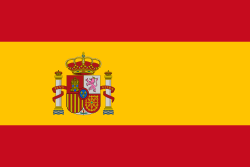Cycling Statistics in Spain: Key Data & Trends
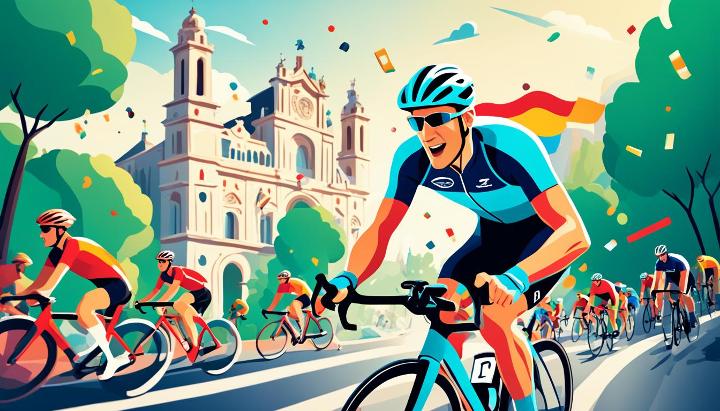
Ever wondered how Spain's cycling culture compares with others in Europe? Let's dive into some surprising stats that show how cycling in Spain is changing. From busy city streets to beautiful countryside paths, Spain's love for biking is growing fast.
Biking in Spain is getting more popular, with a 2-point increase since 2017. Women are leading this trend, with a 6-point jump in two years. [1] Now, a huge 50.7% of people aged 12-79 in Spain cycle often, showing how much people enjoy biking. [1]
The gap between men and women in cycling is getting smaller, down by 16 points since 2010. [1] This change shows a big shift in Spanish society. More women are now using bikes for commuting, staying fit, and having fun. In cities like Seville, Zaragoza, and Valencia, more people bike than in big cities like Barcelona and Madrid. [1]
Spain's cycling culture is booming, but how does it stack up against European capitals? Copenhagen leads with a huge 49% of cycling, followed by Amsterdam at 35%. Madrid trails behind, showing there's room to grow in Spain's capital. [2]
Bike-sharing services have really helped boost cycling. Over three million Spaniards now use public bikes, a 5.1% increase since 2017. [1] This shows more people want easy and green ways to get around the country.
Key Takeaways
- Bicycle usage in Spain has grown by 2 points since 2017
- Women's cycling participation increased by 6 points in two years
- 50.7% of Spaniards aged 12-79 are frequent cyclists
- The gender gap in cycling has narrowed by 16 points since 2010
- Medium-sized cities show higher proportions of bicycle users
- Over 3 million Spaniards use public bicycle services
- Spain's cycling modal share lags behind leading European cities
Introduction to Cycling in Spain
Spain's cycling culture is growing fast. More people are using bikes for commuting, fun, and staying fit. This change shows more people know how good cycling is for health and the planet.
Spain's Cycling Culture
Cycling is a big part of Spanish life. Famous cyclists like Miguel Indurain have made a mark. He won the Tour de France five times from 1991 to 1995. [3] Now, 20% of Spaniards use bikes a lot, with cities like Valencia and Zaragoza having 45% of people cycling. [3]
Recent Trends in Bicycle Usage
More people in Spain are cycling now. The weather is great for it all year, with mild temperatures even in November. [4] This has made cycling tourism popular in places like Catalonia and Andalusia. [4]
Importance of Cycling Data for Policy-Making
Cycling data is key for making cities better and planning transport. It shows trends, what we need for cycling paths, and how cycling projects work. For example, data on 1800 km of greenways helped make better cycling paths across Spain. [3]
Region | Cycling Infrastructure | Popular for Bicycle Tourism |
Catalonia | Extensive bike lanes | Yes |
Costa Blanca | Coastal cycling routes | Yes |
Andalusia | Mountain biking trails | Yes |
Mallorca | Dedicated cycling roads | Yes |
We'll look more into Spain's cycling scene. We'll see how trends and data help shape cycling culture and policies.
Bicycle Usage in Spanish Cities
Spanish cities are changing how people move around. More people are using bikes for daily trips and going to school. This shows how biking is getting more popular in Spain.
Cycling Modal Share in Major Spanish Cities
Seville is a great example of how biking has grown in Spain. It used to have few cyclists but now 6% of trips are by bike. [5] This big change came with a 50-mile bike lane network built in less than two years for $32 million. This led to a huge jump in bike trips on workdays. [5]
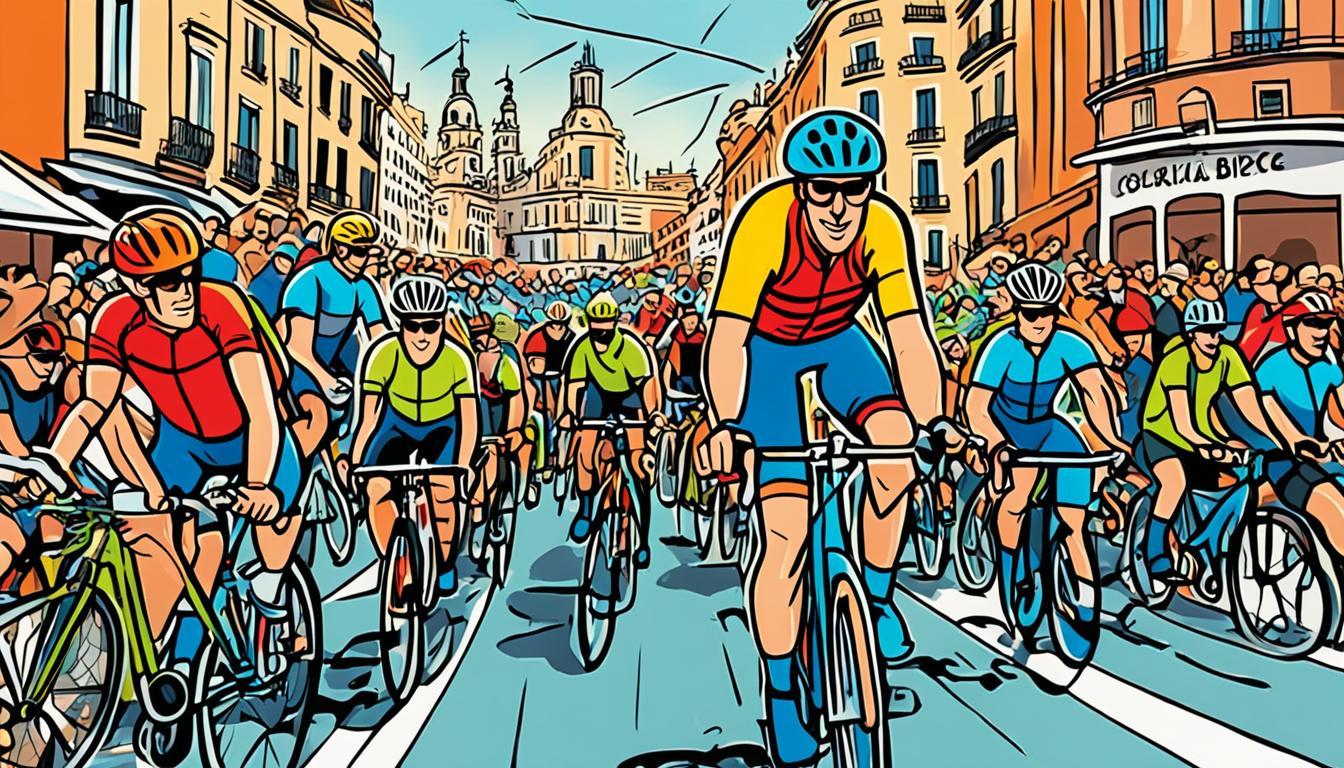
Barcelona is also boosting bike commuting. It grew its bike lanes from 20 km to 110 km from 1992 to 2000. Then, it doubled the separated bike lanes again from 2015 on. [6] By 2023, Barcelona had an amazing 240 km of bike lanes. [6]
Comparison with Other European Capitals
Spanish cities are catching up, but some European cities lead in biking. Berlin plans to add 100,000 more bike parking spots by 2025, on top of the 26,000 at train stations. [6] Paris wants to increase bike parking spots by 130,000 by 2026. This shows the big plans of European cities for biking. [6]
Urban Mobility Patterns and Cycling
Cycling is changing how people move in Spanish cities. Seville's story shows how support and quick action can boost biking. [5] Now, Seville has a 112-mile bike lane network, making biking twice as safe as before. [5]
City | Bike Lane Network (km) | Year |
Seville | 180 | 2023 |
Barcelona | 240 | 2023 |
Madrid | 310 | 2023 |
These changes in Spanish cities show a big push for green transport. As cities keep investing in biking, we'll see more people biking in Spain.
Demographics of Spanish Cyclists
The cycling trends in Spain show a big change. More women are now using bicycles. This shows how Spanish cycling is changing.
In bike-friendly cities, women are cycling more. They are using bicycles more often. [7] This means cycling policies are helping more people join in.
Young people are also cycling more. They are biking to school and university more often. [7] This shows cycling is getting popular among students.
But, cycling is different in each region. In the Guadalajara Metropolitan Area (AMG), it looks different:
Demographic Factor | Percentage |
Male cyclists | 93% |
Female cyclists | 6% |
Most common age group | 30-39 years |
Daily cyclists (7 days/week) | 33% |
We need better safety and infrastructure for cycling. This will help more people cycle. [8] Spanish cycling policies must change to help everyone cycle more.
Cycling Infrastructure in Spain
Spain is making big strides in cycling, showing its dedication to green transport. We've seen a lot of growth in bike lanes, bike-sharing, and places to park bikes in big cities.
Dedicated Bicycle Lanes and Their Growth
Bike lanes have really helped make cycling popular in Spain. Seville is a great example of this change. Back in 2006, it had just 12km of bike paths and only 0.5% of people cycled. Now, it has over 180km of paths, connecting homes and important places. [9,10]
Other cities like Barcelona and Valencia are also improving. Barcelona has many bike lanes to beaches and landmarks. Valencia has bike paths and a bike-sharing system called Valenbisi. Madrid is getting more people to cycle with better bike paths and BiciMAD bike-sharing. [10]
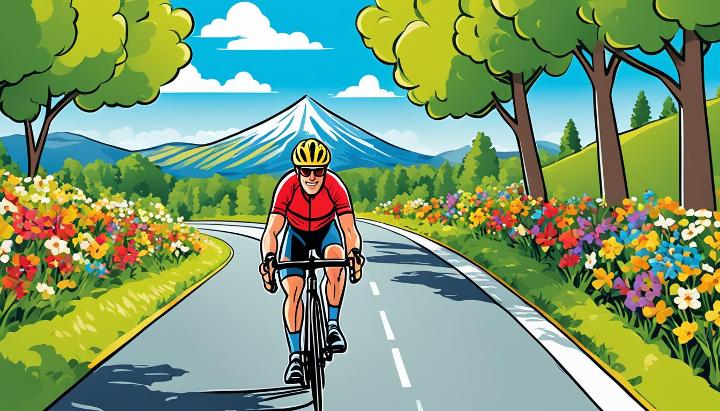
Bike-Sharing Programs and Their Popularity
Bike-sharing is really taking off in Spain. In Seville, there are 2,500 bikes at 263 stations for sharing. [9] Malaga has its own bike-sharing called "Malaga Bici" or "Málaga Mi Bici," making cycling better in the city. [10]
Parking Facilities for Bicycles
The Spanish government is focusing on better cycling infrastructure. They have a plan to make it easier to use bikes with trains. Companies like Renfe and Adif are adding bike spaces on trains and at stations in Madrid. [11]
City | Cycling Infrastructure Highlights |
Seville | 180km of cycling network, SEVici bike-sharing with 2,500 bikes |
Barcelona | Extensive bike lane network connecting landmarks and beaches |
Valencia | Dedicated lanes and Valenbisi bike-sharing system |
Madrid | Growing bike lanes and BiciMAD bike-sharing scheme |
Malaga | Scenic coastal routes and "Malaga Bici" sharing system |
These changes are making biking more popular in Spain. As cities keep adding bike-friendly features, we expect more people to cycle. This will also help make cities better places to live.
E-Bike Market Trends in Spain
Spain's e-bike market is growing fast, expected to jump from USD 1.03 billion in 2024 to USD 1.52 billion by 2029. This means a growth rate of 8.22% each year. [12] More people are choosing electric bicycles, making the market bigger.
Most e-bikes in Spain help you pedal, but some have a special throttle for extra help. [12] The market is competitive, with the top five companies making up 28.85% of the market. [12]
Big names like BH Bikes Europe SL and Giant Manufacturing Co. Ltd. are leading the way. [12] They're making a big impact on cycling in Spain and how people use bikes.
In 2022, e-bikes were the top choice in Spain, making up 45.66% of the market with 237,182 units sold. [13] This shows how more people want to use eco-friendly transport. E-bikes cost about €2,940 on average, much more than regular bikes at €305. [13]
Events and tourism in Spain are helping e-bikes grow in popularity. [13] The country has a cycling strategy from 2021 to 2025, focusing on green transport and tourism. [13] This plan aims to increase bike sales and improve cycling paths.
Even with challenges, the Spanish bike market looks promising. [14] Urban and e-bikes are leading the sales, showing big changes in the market. [14] As cycling paths and bike use grow, we expect more growth in e-bikes. This will help both locals and tourists enjoy cycling.
Cycling Safety and Accidents
In Spain, cycling safety is a big worry as more people start road and mountain biking. More bikes are being sold, but this means more accidents and safety problems.
Cyclist Fatality Rates
Between 2007 and 2016, cycling injuries in Spain went up a lot. More cyclists got hurt and needed hospital care, and even more got hurt but didn't go to the hospital. [15] More cyclists got hurt compared to others, showing we need better safety in road cycling in Spain.
Safety Measures and Their Effectiveness
Spain has taken steps to make cycling safer. The limit for how much alcohol cyclists can have in their blood is 0.5 grams per liter. [16] If cyclists break traffic rules, they can be fined between 30 to 1,000 euros. [16] Kids under 16 and all cyclists outside cities must wear helmets. [16]
Spain has also improved its bike paths and lanes. There are different types of bike paths and speed limits in cities. [15] Cities can set their own speed limits, making some areas safer for bikes. [15]
Public Perception of Cycling Safety
People in Spain have mixed feelings about cycling safety. Even though cycling events are popular, there's worry about how cyclists and pedestrians get along. A study showed more people think cyclists are not respectful to pedestrians, but also more think cars are not respectful to cyclists.
Aspect | Perception | Percentage |
Cyclists' respect for pedestrians | Disrespectful | 51% |
Motor vehicles' respect for cyclists | Not respectful | 54% |
To make cycling safer, Spain could look at what works in countries like the Netherlands. There, most cyclist deaths and serious injuries happen in cities. [17] Dutch cyclists like to use bike paths, have slow speed limits, and good roads. [17] Using these ideas could help make cycling safer in Spain, for both city and mountain biking.
Economic Impact of Cycling in Spain
Cycling in Spain is big for the economy. It helps through sales, services, and tourism. More people are choosing cycling for fun or to get to work.
Bike sales are doing well in Spain. Bicycles are cheaper than cars. They cost less than 6% of what people earn each year. [18] Fixing a bike is also cheaper, costing about $3.00 per 100km, while cars cost $18.00. [18]
Cycling clubs and metrics show how cycling helps the economy. Cycling makes society gain €0.16 for every kilometer. Driving a car costs €0.15. [18] This means big savings for cities and people.
Cycling tourism in Europe, including Spain, adds about €44 billion to the economy each year. [19] Spain sees over 2.2 billion cycle trips and 20 million overnight stays yearly. [19] The cycle tourism market is growing fast, offering chances for Spain's tourism. [19]
Spain sees the value in cycling tourism. It plans to link local EuroVelo routes with others to grow this area. [20] By doing this, Spain could earn about €7 billion a year from the EuroVelo network. [20]
Bicycle Sales and Industry Statistics
Spain's bicycle industry is growing strong. It shows more people are cycling. Let's look at the numbers that show how many bikes are sold and the industry's state in Spain.
Annual Bicycle Sales Figures
In 2022, Spain sold over 1.35 million bicycles. This made €2,714 million. This was a 13.59% drop from the year before. But, the average bike price hit over €1,000 for the first time, at €1,121. [21]
The next year, 2023, saw prices go up again. The average bike cost €1,139.15, a 1.65% increase. [22]
Market Share of Different Bicycle Types
Electric bikes are getting more popular in Spain. In 2022, they made up 45.66% of sales, even though they only made up 17.4% of all bikes sold. [21] This trend kept going in 2023, with e-bikes making up 45.2% of sales and sales going up by 2.28% to over 241,000 units. [22]
Bicycle Type | Market Share (Units) | Price Trend (2023) |
Mountain Bikes | 34.5% | +7.55% (€997) |
Electric Bikes | 17.4% | -13.3% (€2,549) |
Urban Bikes | 22.5% increase in 2022 | -16.72% (€254) |
Road Bikes | Data not available | +4.57% (€2,645) |
Leading Bicycle Brands in Spain
Spain's bike market has many brands, both local and from other countries. The exact market share of brands isn't given. But, Spain had 189 local bike makers in 2022, up 5% from the year before. [21] This shows more local production is happening.
This growth in making bikes is good news. The value of bike production in Spain went up 2.8% in 2022 to €255.8 million. [21]
The bike industry in Spain is big for the economy. It has over 3,300 companies and more than 3,000 places to buy, fix, or rent bikes. [22] This industry directly employs over 24,000 people. It shows how important cycling is to Spain's economy and building up its infrastructure. [22]
Cycling Tourism in Spain
Spain is a top spot for cycling lovers because of its varied landscapes and good bike paths. The cycling world in Spain brings in almost 1.9 billion euros and employs over 22,000 people. [23] With more than 21 million bikes owned by Spaniards, cycling is big here. [23]
Bike tourism in Spain is booming. From 2015 to 2019, the number of people staying in places for cycling trips went up by 34%, hitting 13 million. [23] This growth is even bigger than the cruise industry in Europe. [23]
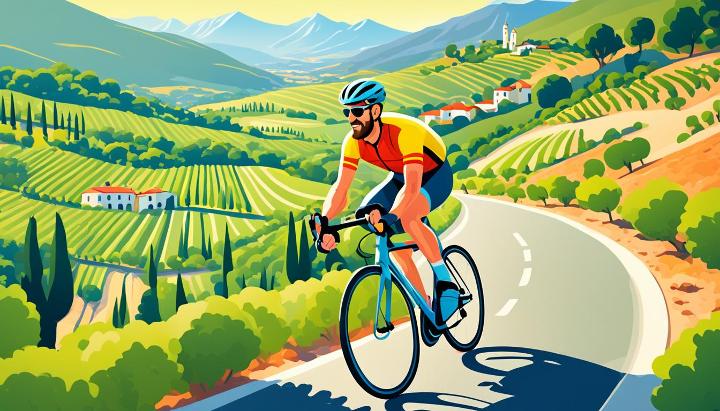
Mallorca is a key spot for cycling, expecting almost 200,000 cycling tourists from October to April. [24] This brings in about €300 million to the area. [24] Popular places for cyclists include Playa de Palma, Paguera, and the bay of Alcudia. [24]
Events like the Sea Otter Europe festival draw almost 60,000 visitors. [23] These events help show off cycling services and Spain's bike-friendly roads.
The cycling tourism in Spain comes from many countries, like Germany, the UK, and the Netherlands. [25] It suits all ages and has four main types: Road Cycling, Mountain Biking, Family Cycling, and Touring/Expedition. [25]
Cycling Niche | Target Demographic | Preferences |
Road Cycling | Men, 18-49 years old | Well-paved roads, higher speeds |
Mountain Biking | Various age groups | Off-road trails, challenging terrain |
Family Cycling | Families with children | Safe routes, leisure-oriented |
Touring/Expedition | Adventure seekers | Long-distance routes, cultural experiences |
Spanish cycling clubs are key in spreading the sport and supporting bike tourism. As Spain keeps improving its bike paths and hosting cycling events, bike tourism is set to grow even more.
Cycling Statistics in Spain: Key Data & Trends
Spain has seen big changes in cycling over the years. More people are cycling now, and the country is changing to support it.
Growth in Cycling Adoption Rates
Cycling in Spain is getting more popular. By 2019, there were 75,680 cyclists and 3,878 clubs. This shows a strong cycling community. [26] More people are paying attention to safety and building better bike paths.
Trends in Commuter Cycling
More people are biking to work in Spain. Most accidents happen in cities, with 71.7% in 2019. [26] We need better bike paths in cities to keep more cyclists safe.
Comparison of Cycling Statistics Over the Years
The number of cyclists has grown a lot. From 2007 to 2016, more people were getting hurt while cycling. [27] This shows cycling is getting more popular, but safety is still a big issue.
To make roads safer, we need to understand how cyclists feel. Things like traffic, distance from cars, speed, and aggressive drivers scare them. [26] Improving bike paths and safety rules will help keep cycling growing in Spain.
Government Initiatives and Cycling Policies
Spain's government is working hard to make cycling better and safer. They are adding more bike lanes and bike-sharing programs. This will help more people cycle, which is something some European countries do more. [28]
Austria wants to get more people cycling, aiming for 13% by 2025. Ireland hopes to reach 10%. [29] These goals show how important cycling is becoming for moving around cities.
Many countries are putting a lot of money into cycling. Italy has set aside €1.154 billion for cycling, and France gave €250 million for active mobility in 2023. [29] Spain is also investing in better bike paths and bike tourism.
But, there are still big challenges. Many people in Spain feel it's not safe to cycle. [28] To fix this, we need better cycling laws and education. This is what Denmark does to keep kids safe while cycling. [29]
Spain can learn from countries like the Netherlands, where 27% cycle. [28] By focusing on safety, education, and good bike paths, Spain can get more people cycling. This will help it grow in the bike tourism market too.
Environmental Impact of Cycling in Spain
Cycling is key in Spain's fight against climate change and making cities better. As more people cycle, the environment is getting a big boost.
CO2 Emissions Reduction through Cycling
Bicycles are super good for the planet, creating only 21 grams of CO2 per kilometer. [30] This is way less than cars or buses. If people used bikes for short trips, Spain could save over 7 million tons of CO2 each year. [30]
Air Quality Improvements in Cycling-Friendly Cities
Cities in Spain that love bikes have cleaner air. Barcelona's bike system grew from 600 to 6,000 bikes, helping the air quality. [31] The goal is to get 2.5% of trips by bike, cutting down on pollution. [31]
Sustainable Transportation Goals and Cycling's Role
Cycling is a big part of Spain's plan for green transport. More people in cities like Barcelona are choosing to cycle. [31] This is thanks to more bike paths and routes from the sea to the mountains. [31] Barcelona has more Brompton bikes than any other city, showing its dedication to green travel. [31]
As Spain keeps improving its cycling paths, we'll see more benefits for the environment. More people cycling means a healthier and greener future for cities.
Future Projections for Cycling in Spain
Spain is seeing a big change in cycling. More people are biking, especially in cities. In Barcelona, bike trips went from 30,000 to 167,000 a day from 2004 to 2019. Now, 2.9% of trips are by bike. [32]
This growth is happening everywhere. In Pamplona, bike lanes grew from 4.8 km to 10.5 km in two years. This shows more people are using bikes. [33]
More women are starting to cycle too. In Seville, female cyclists went from 25% to 36% of all cyclists from 2006 to 2017. [34] E-bikes are also becoming more popular, helping people ride up hills easier. This is why Spain's e-bike market is expected to grow a lot.
Cycling is becoming a key way to get around cities. Seville has gone from 12 km of bike paths to 180 km of separate lanes. [34] Bike-sharing programs are also getting popular, like in Pamplona since 2021. [33] These changes show cycling is important for a green future in Spain.






